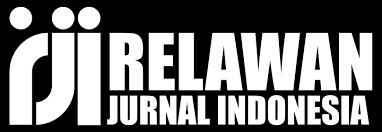TRANSFORMASI EKONOMI INDONESIA : ANALISIS DESKRIPTIF TERHADAP PERUBAHAN STRUKTUR DAN POLA PERTUMBUHAN
DOI:
https://doi.org/10.61722/jiem.v3i11.6973Keywords:
Transformasi Struktural, Ekonomi Digital, Pekerja Mikro, Kedaulatan Data, Inklusi 2030Abstract
Indonesia's economic transformation has shifted from the dominance of theprimary sector (agriculture) to the tertiary (digital services) and secondary(industry) sectors, marked by a decline in agriculture's contribution from 45% of GDP (1970) to13% (2024), as well as a surge in the service workforce from 29.7% (2020) to 49.2%.This process is driven by Engels' Law, urbanization, technology investment, and downstreaming,but is hampered by fluctuating mineral regulations, logistics costs that are 1.8 times more expensivethan Malaysia, and the loss of 1.2 million formal jobs toVietnam/Thailand.Globalization has opened up the service market (42% FDI to data centers &health-tech), creating 4 million micro-workers (ojol, couriers, creators) with anaverage income of IDR 3.5 million/month, which is 35% below the Jakarta minimum wage, but 30% of whom are female heads of rural households who are nowindependent. The Gojek-Shopee platform contributes 5% of household consumption via 10.9 billiontransactions (2024), while also giving rise to the risk of structural unemployment,data leaks, and a service balance deficit.This descriptive-qualitative study analyzes data from BPS, WorldBank, and ADB to formulate five strategic pillars for 2030: (1) equitable 5Gbroadband, (2) 1 million STEM talents via Digital Talent Scholarship, (3) a secureblockchain & Sovereign Cloud-based ecosystem, (4) an AI-semiconductor innovation centerAI-semiconductor innovation centers, and (5) adaptive regulations (Omnibus Law, PDP Law, National SPBE). This penta-helix synergy is expected to make Indonesia notjust a “digital colony,” but an engine of inclusive growth that creates 15million high-quality jobs and adds 2.5% to annual GDP by2030.
References
Bachtiar, P. P., Berlianto, J., & Amelia, L. (n.d.). ACCELERATING INCLUSIVE AND FAIR DIGITAL TRANSFORMATION TO ANTICIPATE CHALLENGES FACING THE FUTURE OF WORK. 1.
Fatmawati, A., Iskandar, D. D., & Semarang, K. (2018). Jurnal Dinamika Ekonomi Pembangunan. 1(3).
Multidisiplin, J., & Volume, S. (2025). 3 1*,2,3. 9(2).
Nanga, M., & Widjaja, W. (2024). Structural Transformation in the Indonesian Economy : Why does ’ Financial Development ’ Matter ? 19(2), 213–222.
Oyvat, C. (2015). Structural Change and the Kuznets Hypothesis.
Pertanian, D. E., & Ekonomi, F. (2023). Analisis Empiris Atas Teori Dualistik Ekonomi Lewis : Studi Kasus Indonesia Empirical Analysis of the Lewis Economic Dualistic Theory : The Case of Indonesia. 12(1), 1–22.
Rinaldi, N., Erfit, E., & Rosmeli, R. (2022). Transformasi Struktural Perekonomian Indonesia. 117–126.
Studi, P., Negara, A., & Putra, U. W. (2022). DAMPAK GLOBALISASI DI NEGARA INDONESIA Fadhilah Dwi Widianti. 2, 73–95.
Wahyudi, S. T. (2023). Structural Transformation Patterns and Factors That Influenced : The Case in Indonesia Pola Transformasi Struktural dan Faktor yang Mempengaruhinya : Kasus di Indonesia. 19(1), 112–126.
Wihardja, M. M., Bank, W., & Bank, W. (2024). The Heterogeneous Impacts of Digital Transformation and Investment on Indonesia ’ s Labour Market. 524.
Downloads
Published
Issue
Section
License
Copyright (c) 2025 JURNAL ILMIAH EKONOMI DAN MANAJEMEN

This work is licensed under a Creative Commons Attribution-ShareAlike 4.0 International License.












